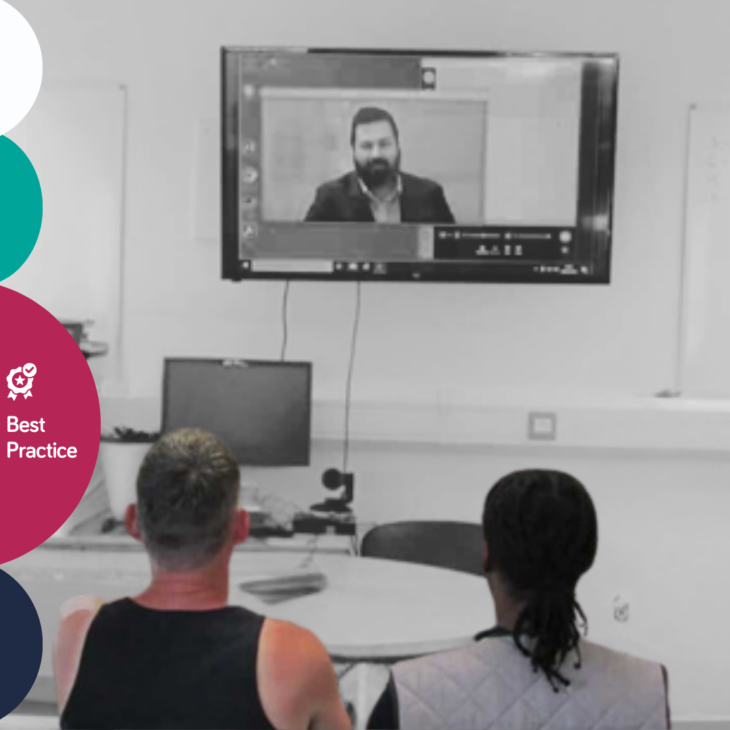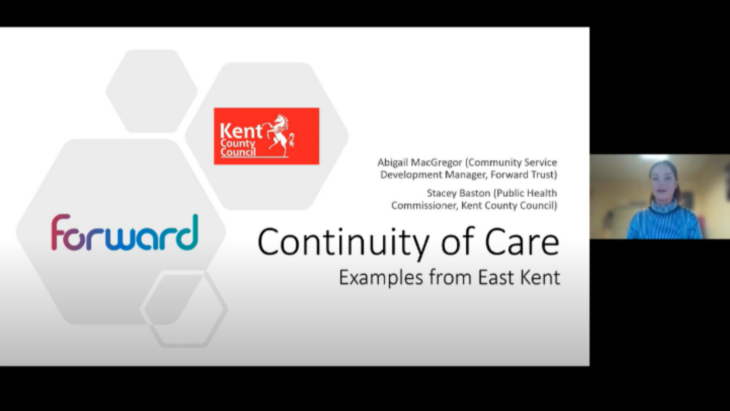Joint working between prison, community and statutory providers in collaboration is the ‘golden thread’ that runs throughout our continuity of care approach

Securing continuity of care for our prison leavers has always been a fundamental objective for Forward – release from prison can be daunting, with many challenges. For over 20 years, our Recovery Support team have operated a ‘Meet & Greet’ service, meeting people at the gate to support them on their onward journey.
An integrated care pathway from prison to the community is crucial for supporting recovery and therefore reducing reoffending, helping to ensure that progress made in prison can be built upon and recovery goals maintained. Ongoing support also provides a crucial safety net, with vulnerability to drug-related overdose significantly higher following release. In the UK, 48 people a year die in the first two weeks after prison release, whilst studies show opiate overdose risk is 10 times greater for those recently release from prison.
Key Principles of our approach
- Recognise each individual’s unique journey
- Tailor approaches – recognise different sentence lengths in different prisons
- Establish joint-working protocols between prison and community teams
- Co-design release paperwork (between teams) to maximise continuity and avoid duplication
- Incorporate tele-recovery to facilitate prisoner contact with community teams paperwork
Best Practice Framework
Our framework starts with the recognition that every individual’s journey through prison treatment is unique, and each person will have different goals in relation to their recovery. We also recognise that each prison is different and sentence lengths vary. However, the processes to support prison leavers can, and have been, quantified into a framework that supports best outcomes. The framework identifies our responsibilities towards continuity of care as well as the other support services and community providers’ responsibilities. Importantly our framework provides a checklist for practitioners that is tailored to the needs of each individual establishment.

Joint Working
Achieving a seamless pathway of care from prison into the community cannot be achieved by one service alone. Joint working between prison, community and statutory providers in collaboration with the person being released is the golden thread that runs throughout our continuity of care approach.
As such, new joint working protocols have been established between our prison services and the relevant release community teams – the protocols are supported by new co-designed release paperwork that secures continual communication between prison and community teams. The protocols also seek to mitigate the need to start treatment from the beginning, which we identified as a frustrating and disheartening barrier to engagement. Work commenced before and during custody should be continued, without the need for replication.
Continuity of Care Working Group
We have also established a new Continuity of Care Working Group, bringing together shared expertise from our commissioned prison and community rehabilitation teams, together with central Data, Research and Development teams. Meeting bi-monthly the working group provides a forum for continual learning, identifying barriers, solutions and best practice from across the regions, ensuring that all our services are benefiting from information that before was held locally and not shared across regions.
Tele-Recovery
Evidence shows that continuity of care rates of 80% can be achieved when a prisoner is able to engage with the community team prior to release, enabling them to build a rapport. However, the dispersed nature of the prison population and workload pressures on community teams has historically made this difficult to facilitate. The advancement of the HMPPS Tele-Recovery project makes this much easier and has been incorporated into our model. Tele-Recovery now provides a secure digital platform for pre-release meetings to take place, enabling the formation of a professional relationship between the person being released and the community provider, a key factor in securing ongoing treatment. We continue to support HMPPS with the roll-out, and as more and more of our prison services gain access to this technology we aim for everyone to be offered the opportunity for a digital pre-release meeting as part of their release planning.
Impact
The latest PHOF C20 report, the second report to be published since the new work begun, has shown that 45% of Forward’s eligible prison services saw improvements in their continuity of care pick up rates, some by over 20%. HMP Send has achieved an 80% success rate, whilst HMP Highdown and HMP Brixton are now the top two performing London prisons for continuity of care. Achieving such notable improvements in a short time frame is a testament to our hardworking services and the determination of those we support. Further improvements can be made, and we are fully committed to building on this success to best facilitate the opportunity for people to make transformational change, continuing on their recovery journey in the community.